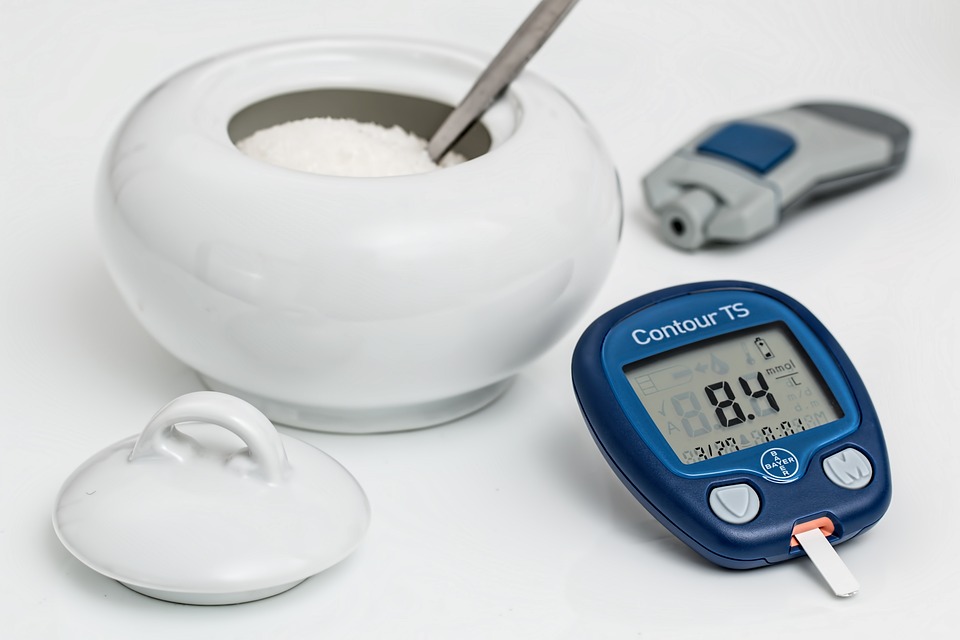It is certainly not pleasant for diabetics to experience fluctuations in their blood sugar levels throughout the day. Maintaining concentration and keeping blood sugar levels steady day-to-day can be a struggle. Your energy levels may dip, and you may become irritable when your blood sugar levels change frequently.
No matter if you know your blood sugar levels or not, they could still boost your chance of experiencing various severe health conditions. This is how to determine if your blood sugar is at a healthy level, as well as a bunch of straightforward ways to maintain this healthy level–in a natural and successful manner.
It’s simple to think that you have command over your sugar level, but everyone requires a few reminders. High and low blood sugar levels can be an issue for individuals who don’t look after their glucose control, which is why it is important to be aware of potential side effects.
While everyone’s body chemistry will be unique, there are some common side effects of having a blood sugar imbalance that includes:
- Fatigue
- Irritability
- Weakness
- Concentration difficulties
- Mood swings
- Blurred vision
- Headaches
- Frequent urination
- Increased thirst
An unevenness in blood glucose levels can bring about both discomforting and inconvenient signs all day long. Despite this, there is a bright side: you should experience a substantial improvement after making several changes to how you live.
Making modifications to the way you live and what you eat can help you to manage your blood-sugar levels more effectively. Have a look at these ideas on how to keep your blood glucose levels even.
What Is a Blood Sugar Spike?
A quick rise in blood glucose levels is referred to as a blood sugar spike. Hyperglycemia, which is another term for an elevated blood sugar level, can be a health hazard if it occurs repeatedly.
If a person has high blood sugar levels that occur often and over a long period of time, it can lead to adverse health problems. The long-term elevation of one’s blood sugar levels can cause arteries to stiffen, thus inhibiting the flow of blood to vital organs, for example, the heart.
Blood sugar levels tend to rise after consuming food, but they can also increase at other points throughout the day. An increase in your blood sugar level higher than the normal range is possible when your body is not producing enough insulin or is not responding well to the insulin it produces.
The dangers associated with recurrent increases in blood sugar levels may include heart disease, myocardial infarction, stroke, renal disease, vision impairment, neural injury, and other health issues. Both types of diabetes, type 1 and type 2, can be associated with complications.
Blood Sugar Targets After Eating
The target levels of blood sugar for you may vary from other people who have diabetes. Your doctor can work with you to determine the optimal blood sugar level for you depending on other medical conditions, age, and the danger of experiencing low blood sugar.
If the amount of sugar in your blood is higher than 180 mg/dL and has gone up rapidly, this could be classified as a spike in your blood sugar. A sudden fluctuation of blood sugar can be referred to as a blood sugar spike, even if the level does not raise to 180 mg/dL or above.
The goal for blood sugar levels after eating (when most blood sugar spikes occur) are as follows:
- Less than 180 mg/dL one to two hours after starting a meal.
- Less than 140 mg/dL two hours after a meal.
- For women with gestational diabetes: Less than 140 mg/dL one hour after a meal, and less than 120 mg/dL two hours after a meal.
Tips to Maintain Your Blood Sugar Levels Healthy
It’s easy and natural to maintain a stable blood sugar level, which is sure to make you pleased. This is a great way to have increased vigor, concentrate better, experience fewer undesirable moods, and decline your desires for carbohydrates, all without the requirement for medicine.
1. Practice portion control when it comes to carbohydrates.
A nutrient known as carbohydrates is utilized by your body to provide it with energy. Carb-containing food items such as grains, fruit, legumes, vegetables, and a few dairy products like milk and yogurt can be found.
A great number of vegetables have a meager amount of carbohydrates, but a small selection are recognized as starchy. Vegetables that are high in starches have a greater concentration of starch, which is a type of sugar that causes your blood sugar to rise. Potatoes, winter squash, corn and peas are all types of starchy vegetables.
Take control of your carbs and help line up your blood sugar levels by employing the Plate Method for Diabetes and limiting your intake of carbohydrates to about a fourth of your meal. This technique does not require any calculations of carbohydrates, but instead aids you in getting a better mental image of how much carbs you are eating.
2. Avoid sugary drinks.
Beverages such as soda, tea/coffee with sugar, and fruity drinks have large amounts of added sugar. The situation is even worse since drinking liquids causes the contents of your stomach to be cleared out rapidly, thus causing the sugar in beverages to be absorbed faster than if you had consumed solid food with either carbohydrates or sugar.
Sweet drinks are a major source of the abrupt increases in blood sugar. A regular sized can of cola contains 33g of extra sugar, which is more than the daily suggested amount of less than 25g for ladies and near the 36g recommendation for guys.
3. Cut back on added sugars.
Sugary drinks aren’t the only sources of added sugar. It is believed that approximately 60% of processed foods come with sugar added to them, as suggested by the researchers from the University of North Carolina.
Processed foods can sometimes be deceivingly unhealthy – items such as yogurt, cereal, bread, and other foods can have undisclosed added sugar. Examine the nutritional detail when you are shopping to help reduce undisclosed added sugars.
4. Eat balanced meals that include protein and healthy fats.
One of the three primary components of nutrition is protein, in addition to carbohydrates and fat. Protein does not cause the same abrupt rises in blood sugar that some types of carbs may cause. Consuming proteins alongside carbs can sustain steadier blood sugar concentrations and reduce the risk of sudden upticks in glucose.
Examples of food-sources with protein are meats (such as beef and pork), fowl, seafood, eggs, nuts and nut spread, seeds, beans, and soya items.
Fat consumption does not have a major impact on your glucose levels, and it can lead to feelings of satiation. Omega-3 fatty acids are abundant in healthy fats, while saturated fat is reduced. Consuming beneficial fats can also assist in keeping cholesterol levels healthy.
Healthy fats generally originate from plant-based sources such as nuts, seeds, oils obtained from vegetables, and avocados. They can also be located in oily fish such as salmon.
5. Take diabetes medication as prescribed.
Follow your doctor’s instructions carefully when taking diabetes medication. It is particularly vital that you use insulin to regulate your blood sugar levels.
Being deficient in insulin can put you at risk for having sudden spikes in your blood sugar. You should always bring your mealtime insulin with you when you go out. This is to prevent your blood sugar from increasing quickly when you’re eating away from your house.
6. Manage your stress level.
Whenever you experience anxiety, your adrenal glands secrete the hormone cortisol. Cortisol causes a reaction in the body where it is prepared to either battle or retreat. This response brings forth physical modifications in the body, like the dilating of the pupils and an increased heart rate. A study has shown that cortisol boosts blood sugar levels while simultaneously lowering insulin levels.
Chronic stress can be detrimental since cortisol levels stay heightened for a longer time frame than is considered beneficial. Extended emotional strain can result in health issues, including the possibility of experiencing spikes in one’s blood sugar level. Research has suggested that bloodstream glucose can be increased in people with type 2 diabetes as a result of cortisol.
A few examples of activities that may help relieve stress include exercising, writing in a journal, concentrating on deep breaths, and speaking to a therapist.
7. Try to lose a few pounds if you can.
If you are too heavy, slimming down could help keep your blood sugar levels steady and avoid sudden increases.
Lowering the amount of weight that you have by 5-10% can help to protect individuals at risk of getting diabetes and can help to regulate blood glucose levels in those who already have diabetes. For someone who weighs 200 pounds, this would mean shedding a range of 10-20 pounds.
Reducing your body weight enhances your body’s ability to regulate your blood sugar levels through increased insulin sensitivity.
8. Fiber-load your body.
Fiber aids in regulating blood sugar levels as it is even more effective than beneficial fats at slowing down the digestion of carbs. Fiber is a great tool for managing hunger levels as it can keep you satiated for longer periods of time, resulting in fewer desires for snacks and less of a rise in blood-sugar after eating.
Many high-fiber foods include:
- Veggies like broccoli, asparagus, and spinach (steamed or cooked)
- Berries (fresh or frozen)
- Nuts like walnuts and almonds (chopped up over cereal or salads)
- Beans
- Sweet potatoes
9. Add cinnamon to your food.
Cinnamon can provide more than just a unique taste to your preferred meals. A 2013 study demonstrated that this zesty spice could be the answer to keeping blood sugar levels low and even bettering the creation of insulin.
10. Get enough sleep.
No quick fixes exist when it comes to regulating blood sugar. It is essential to get an adequate amount of quality sleep in order to ensure that blood sugar is regulated throughout the day. Make sure you are getting a minimum of seven hours of sleep each night to guarantee you receive adequate rest.
Getting a good nights’ sleep is essential for keeping your blood sugar regulated, so make it a point to go to bed early each night and make sure that you feel rested afterwards in the morning.
11. Plan your meals.
Be ready for whatever may come up and always have a healthy bite to eat on hand. In order to prevent a low blood sugar level, granola bars and glucose tablets can be consumed to decrease the probability of it occurring.
It is a wise choice to pre-arrange your meals in order to guarantee you are taking in the proper amount of necessary vitamins and minerals each day. It also simplifies managing blood sugar levels and avoids abrupt increases in sugar.
12. Get yourself an apple cider vinegar shot.
Apple cider vinegar has been praised for its capacity to combat bacteria and viruses when taken as a health supplement. It is not only beneficial for weight loss by burning fat, but it also promotes blood sugar regulation by increasing insulin production, assisting your kidneys to flush away toxins, and promoting digestive health.
The acetic acid in apple cider vinegar can assist your cells to believe the presence of glucose, heighten the effectiveness of insulin, reduce digestive enzymes which result in the breaking down of carbs, and increase the numbers of beneficial microorganisms in your gut.
Begin by combining 2 tsp of organic unpasteurized ACV with 8 oz of liquid and then consume it prior to each meal.
13. Drink plenty of water.
Water is absolutely essential for blood glucose control. Not drinking enough water can cause your blood sugar to go up, ultimately resulting in feelings of tiredness and irritability. Consuming water prevents drying out and supports your kidneys in getting rid of any unnecessary sugar through urine.
An appropriate amount for you to drink per day if you weigh 200 pounds would be half that number, which would be 100 ounces.
14. Cut back on processed foods.
One of the initial moves to promote better blood sugar regulation is to cut out processed food and substitute these with nutrient-dense, whole foods such as fruits, veggies, pulses, nuts, seeds, lean meats, and fish. The huge majority of prepared foods are filled with sugar, processed carbs, processed grains, and synthetic ingredients, but provide little dietary fiber or protein to regulate your blood sugar levels. Removing these dishes from your eating plan will definitely have a large effect on your body weight and total well-being.
15. Move more, stress less.
If you’re not very active and typically have a desk job or other inactivity, it could be one of the largest contributors to managing your blood sugar—particularly if you have had issues with your blood sugar being too low in the past. Take regular breaks at work, including standing up at least once an hour, taking a walk around the office building whenever possible, and using the stairs in place of elevators.
It is essential to handle stress since emotional suffering can usually lead to consuming more food than necessary and hence, putting on weight. Reduce your mental tension through activities like:
- Meditating or practicing yoga.
- Getting enough rest.
- Listening to calming music and taking regular walks outside.
Final Thoughts
Improving glucose levels begins with making minor adjustments to the dietary intake. Keep in mind that your way of life and eating routine can impact your blood sugar–from stress regulation and slumber customs down to the amount you drink and your activity schedules.
Give these strategies a go, one after the other, until you locate something that works well for you.







